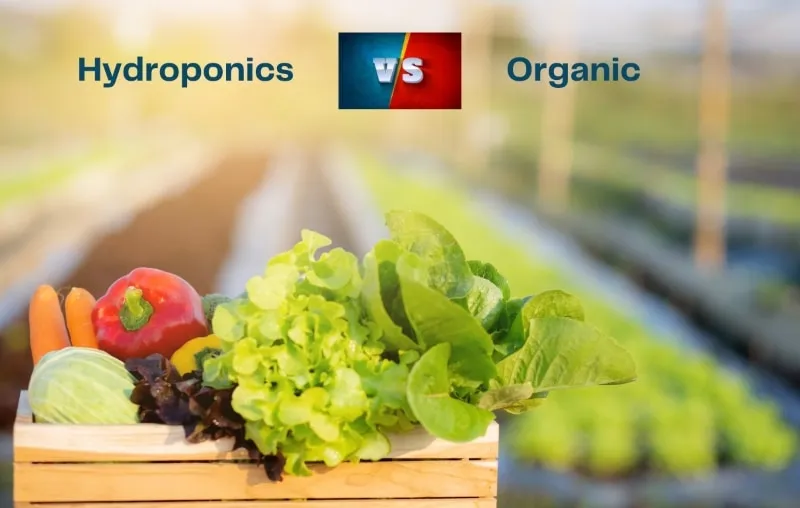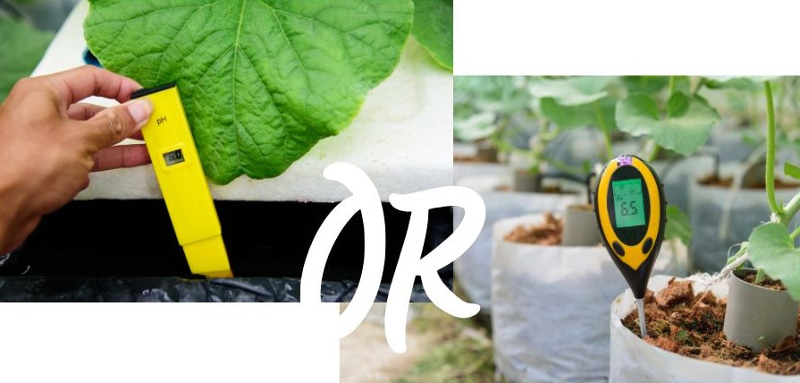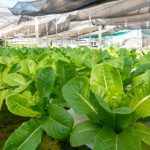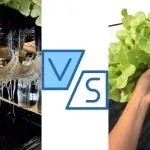Is hydroponics worth it? Are you thinking about taking up hydroponics but wondering if it’s worth your time, effort, and investment? Well, we’ve got you covered. In this article, we’ll give you an in-depth look into the world of hydroponics and answer the burning question: is it really worth it?
In short, the answer is a resounding yes. With hydroponics, you can grow plants faster, with higher yields and better quality, using less water and fewer pesticides. Plus, it’s a sustainable and eco-friendly way of gardening. But, while the benefits are impressive, hydroponic gardening requires careful planning and management to be successful. The cost of setting up a hydroponic garden varies depending on the system’s size, technology, and additional equipment.
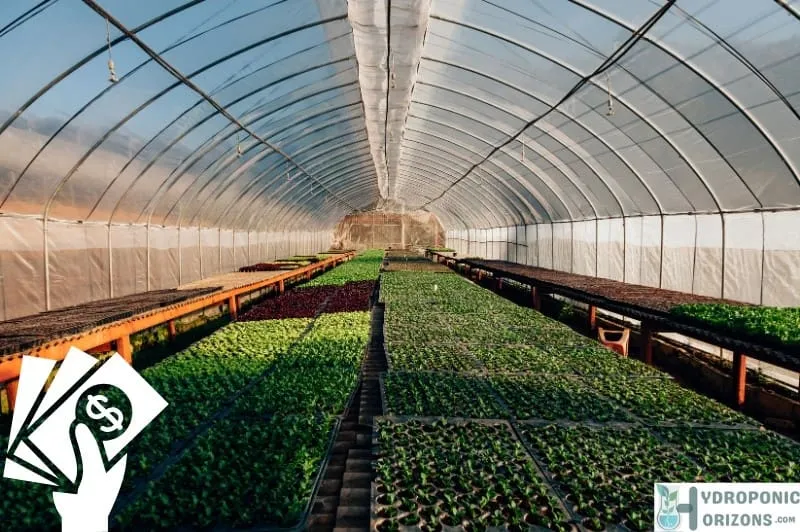
So, if you’re curious about the benefits, the drawbacks, the costs, and the best plants to grow with hydroponics, you’ve come to the right place. We’ve gathered insights from experts in the field and compiled all the information you need to make an informed decision. So, without further ado, let’s dive into the world of hydroponics and see if it’s worth your time and effort!
- Is Hydroponics Expensive?
- Benefits of Hydroponic Gardening vs. Soil Gardening
- Is Hydroponics Cost Effective? A Look At Costs and Investments
- Hydroponics Setup and Components
- Personal and Time Commitments
- Cost Considerations of Common Hydroponics Systems
- Reducing Costs With DIY Hydroponic Systems
- Selecting Suitable Plants
- Additional Ways to Save Money in Hydroponics
- FAQs
- Concluding Thoughts
Is Hydroponics Expensive?
Hydroponics can range in cost from a simple wick system for $10-$50 to a professional nutrient film technique (NFT) system for $10,000 or more. However, once the initial investment is made, hydroponics can be cost-effective in the long run, with low repeat costs and cheaper nutrients costing less than $100 per year.
Benefits of Hydroponic Gardening vs. Soil Gardening
When comparing hydroponic gardening to soil gardening, there are several notable differences to consider when it comes to costs. In this section, we’ll go over the many advantages of hydroponics that make it worth considering for your gardening need.
Yield and Efficiency
Your hydroponic garden can produce faster growth and higher yields than traditional soil-based growing methods. This efficiency is due to better nutrients and water management, as you provide your plants with the precise amounts they need. As a result, you avoid overwatering or nutrient deficiencies commonly seen in soil-grown plants.
Plant Growth and Nutrition
One key benefit of hydroponics is increased plant growth and potentially more nutritious produce. Your hydroponic plants can grow faster because they don’t have to compete for resources as they would in soil. Additionally, you can tailor the nutrient solution to the specific needs of each plant, enhancing its flavor and nutritional content.
Environmentally Friendly
Hydroponics is an environmentally friendly choice for a few reasons:
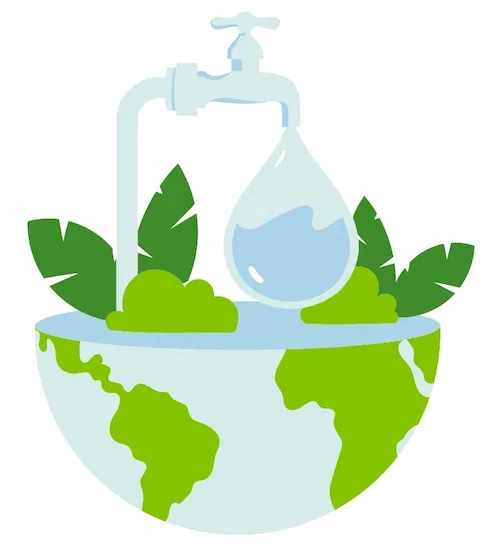
- Water conservation: Hydroponic gardens use considerably less water than soil-based gardens, as water and nutrients are delivered directly to the plants’ root systems. In addition, your hydroponic system recirculates water, resulting in up to 90% less water usage than traditional agriculture.
- Reduced pesticide use: By eliminating soil, you also reduce the risk of weeds and pests, decreasing your need for pesticides.
- Efficient fertilizer usage: Hydroponics has better fertilizer utilization in the form of water soluble solutions compared to traditional cultivation methods. You have complete control over the growing conditions for your plants, including the nutrient balance, pH levels, and temperature.
Related: Read our detailed analysis of the pros and cons of soil vs hydroponics gardening.
Indoor and Urban Farming Potential
Hydroponics is a perfect fit for urban environments due to its space-saving design and ability to grow crops without the need for a plot of land. This is possible due to lower hydroponics plant spacing requirements. Urban centers can benefit from hydroponic gardening, providing fresh produce directly to the community and reducing the environmental impact of transporting goods over long distances.
Is Hydroponics Cost Effective? A Look At Costs and Investments
When considering whether hydroponics is worth it, it’s essential to look at both initial investment costs and the ongoing maintenance costs. In this section, we’ll break down these expenses and compare them with traditional soil gardening.
Initial Investment
Is hydroponics expensive? The systems require an initial investment in equipment and components. The cost will vary depending on the size and complexity of the system you choose. Some basic systems may be affordable, while others may require a more substantial investment. If you’re just starting it as a hobby, you might want to read our guide on hydroponics at home for beginners. Keep in mind that while the upfront costs may be high, the long-term benefits and efficiency of hydroponics can often justify the expense.

Some of the components you’ll need for your system include:
- Grow trays or containers
- Air and water pumps
- Lighting system
- Nutrient solutions
- Grow medium
Maintenance Costs
Hydroponics systems have ongoing maintenance costs to ensure optimal plant growth and productivity. These costs may involve purchasing nutrient solutions, replacing grow medium, and maintaining equipment such as pumps and artificial lights. Monthly expenses for hydroponics systems can range from $40 to $150, depending on the size of your system and the plants you grow.
Is Hydroponics Cheaper Than Soil?
While the initial costs of hydroponic farming may be higher than traditional soil gardening, hydroponics offers several advantages that can offset these expenses. Here are some pros and cons of hydroponics compared to soil gardening:
| Hydroponics | Soil Gardening |
|---|---|
| Higher plant yields Faster plant growth Lower water usage Better nutrient control Less space required | Lower initial investment Easier setup for beginners Soil contains natural nutrients No need for reliable electricity Some plants prefer soil |
As you can see, both hydroponics and soil gardening have their pros and cons. It’s essential to carefully consider your specific needs and preferences when determining if hydroponics is the right choice for you.
Hydroponics Setup and Components
Setting up your hydroponic garden involves several components to ensure your plants thrive. The key elements are grow lights, pumps and aeration systems, and automation and greenhouse integration.
Grow Lights
One essential component in a hydroponic setup is the use of grow lights. These LED lights provide the necessary spectrum of light for your plants to grow efficiently. LED grow lights not only offer energy efficiency but also encourage plant growth better than traditional lighting methods. It’s crucial to choose the right intensity and light spectrum for the specific plants you’re growing.
Pumps and Aeration
Proper aeration and nutrient delivery are vital for successful hydroponic systems. Your plants’ roots need to be submerged in a nutrient-rich solution instead of soil. To keep the water oxygenated and provide essential nutrients to your plants, you’ll need to use a pump system. Choose a reliable pump that can move the water around your hydroponic system effectively.
Automation and Greenhouse Integration
Integrating your hydroponic system with automation techniques and greenhouse technologies can help make managing your garden more efficient and reduce the time and effort you have to personally put in. Automation allows for precise control over factors like nutrient delivery, water levels, and lighting cycles. It also helps reduce labor costs. Additionally, integrating your system with a greenhouse can benefit from environmental controls, which will further enhance your hydroponic gardening experience and increase your yields.

By carefully selecting and combining these key components, you can create a hydroponic system that delivers optimal results for your plants. Remember, the success of your hydroponic garden relies on the quality of your components and their ability to work together seamlessly.
Personal and Time Commitments
Personal and time commitments are crucial factors to consider when evaluating the worth of hydroponics. Hydroponics requires a certain level of attention and effort to ensure optimal plant growth and health.
There’s a dedication required to maintain a hydroponic system. Unlike traditional soil-based gardening, hydroponics involves managing a more controlled environment for plants to thrive in. This includes monitoring pH levels, nutrient levels, water levels and temperature, and lighting conditions to ensure that the plants receive everything they need to grow. A hydroponic system requires regular maintenance and attention, and neglecting it can lead to poor plant growth or even system failure.
While pests and diseases are less of a nuisance compared to soil growing, regular inspections are required to catch and address any issues before they escalate. Therefore, hydroponics is more suitable for individuals who are willing to invest the time and effort into maintaining the system and plants.
You can make your life a lot easier if you invest in automated systems, as explained above, to reduce these factors by a lot.
Cost Considerations of Common Hydroponics Systems
How much does a hydroponic system cost? As you explore hydroponics, it’s essential to understand the various systems available. In this section, we’ll briefly cover three common hydroponics systems: Nutrient Film Technique (NFT), Aeroponics, and Drip System.
Nutrient Film Technique (NFT)
The Nutrient Film Technique is a popular hydroponics system where a thin film of nutrient-rich water constantly flows over the plant roots. The cost of a NFT hydroponic system can vary depending on the size, materials used, and where you purchase it from. Generally, a small system suitable for home use can cost anywhere from $50 to $200, while commercial growers can spend several thousand dollars or more.
In this setup, you can use different growing media like clay pebbles, sand, or even foam to support your plants. NFT provides an efficient way of delivering nutrition to your plants, but it may have a slight learning curve to set up and maintain the system.
Benefits of NFT include:
- Maximized use of space
- Reduced water usage
- Constant nutrient delivery
Aeroponics
Aeroponics is another innovative hydroponics system where your plants’ roots are suspended in the air and periodically sprayed with nutrient-rich mist. This method allows for excellent oxygenation of the roots, promoting rapid growth. However, the setup can be more complex, and it might require more attention to maintain proper nutrient balance and misting intervals. A basic home aeroponics system can cost anywhere from $50 to $500, while larger commercial systems can cost thousands of dollars. The cost of an aeroponics system can also depend on the materials used to construct it, such as the type of pump, nozzle, and reservoir.
Advantages of aeroponics include:
- Increased oxygen availability
- Efficient use of nutrients
- Scalable for various plant sizes
Drip System
The Drip System is an easy-to-understand hydroponics method that involves dripping nutrient-rich water directly onto the roots of your plants. In this system, you can use various growing media like sand, clay pebbles, or even foam to support your plants. The learning curve is relatively low for this setup, making it an excellent option for beginners. Generally, a small drip system suitable for home use can cost somewhere between $50 and $200. Larger systems can cost several hundred dollars or more. The cost of a drip system can also depend on the type of growing medium used, such as rockwool or coconut coir.
Benefits of the Drip System include:
- Simple setup and maintenance
- Consistent nutrient delivery
- Adjustable drip flow rates
Each of these hydroponics systems has its own advantages and challenges in terms of setup, nutrition, and maintenance.
Reducing Costs With DIY Hydroponic Systems
Creating your own hydroponic system can be an affordable and enjoyable experience. In this section, we’ll walk you through the process of building a basic structure and setting up a water and nutrient delivery system.
Building the Structure
A DIY hydroponic system can be designed with cost-efficiency in mind. You can start by selecting a modular structure, which allows for easy expansion and customization as your needs grow. PVC pipes are a popular choice for constructing the frame, as they are readily available and affordable.
For the growing containers, consider using everyday items like plastic buckets, tote bins, or old gutters. To support your plants without soil, you can use clay pellets, coconut coir, or another suitable growing medium. Remember to drill holes in your containers for proper drainage.
Setting Up the Water and Nutrient Delivery System

Once the structure is in place, it’s time to set up the water and nutrient delivery system. To keep costs down, consider using an air pump from a home aquarium along with standard PVC tubing. The air pump will help oxygenate the water and support healthy root growth.
Connect your pump to the main reservoir, where you’ll store the nutrient-rich water solution. To get started, simply mix the appropriate hydroponic nutrients with water according to the package directions. Ensure the pH is balanced for optimal plant growth.
For a simple DIY system, consider incorporating a drip irrigation setup. This involves connecting your pump to a series of tubes that deliver water and nutrients directly to the base of each plant. Be sure to regularly monitor and adjust the nutrient levels according to your plants’ needs.
In summary, building a DIY hydroponic system can be an affordable and enjoyable endeavor. By selecting cost-effective materials like PVC pipes and modular components, you can create a flexible and customizable environment for your plants. With proper care and maintenance of your water and nutrient delivery system, along with a keen eye on your plants’ growth, you’ll be well on your way to enjoying the benefits of hydroponics.
Selecting Suitable Plants
Is hydroponics profitable? When deciding to cultivate a hydroponic garden, it’s essential to pick the right plants that will thrive in this environment. If you want to sell your produce for profit, this is probably the most important factor. In this section, we’ll discuss suitable and profitable plants for your hydroponic garden, focusing on herbs, strawberries, and other viable options.
Herbs
Herbs are an excellent choice for hydroponic gardening due to their compact size and simple growing requirements. Some popular herbs to grow hydroponically include:
- Basil
- Mint
- Chives
- Cilantro
- Parsley
You’ll enjoy fresh, flavorful herbs year-round by growing them hydroponically. These plants typically have faster growth rates in a soilless environment, which means you can harvest them more frequently for your culinary needs.
Strawberries
Strawberries are another excellent option for hydroponic growers, especially if you want to enjoy homegrown fruit. These plants can thrive in a hydroponic system, producing delicious, juicy berries without any soil. When growing strawberries hydroponically, consider the following:
- Choose an everbearing or day-neutral strawberry variety for a continuous harvest.
- Provide adequate lighting, temperature, and humidity conditions for optimal growth.
- Monitor the nutrient levels in the water regularly to maintain healthy growth.
By following these guidelines, you’ll be able to produce a steady supply of fresh strawberries for you and your family to enjoy.
Other Viable Options
There are a variety of other plants that can grow well in hydroponic gardens. Some of these options include:
- Leafy greens, such as lettuce, spinach, and kale
- Tomatoes
- Peppers
- Cucumbers
- Zucchini
- Microgreens
When selecting the plants for your hydroponic garden, consider your personal preferences, the available space, and the optimal conditions each plant requires. By doing so, you’ll create a thriving garden that serves you and your family well.
Additional Ways to Save Money in Hydroponics
Avoid Buying Liquid Concentrates as Fertilizers

One way to save money in hydroponics is to avoid buying liquid concentrates as fertilizers. These pre-mixed solutions can be costly, especially for large-scale hydroponic systems. Instead, consider making your own nutrient solutions using dry fertilizers. Additional benefits of mixing your own fertilizers include the ability to tailor the nutrient mix to your plants’ specific needs and to adjust the nutrients based on the growth stage of your plants.
With a little research, you can learn how to mix the proper ratios of macronutrients (nitrogen, phosphorus, and potassium) and micronutrients (such as calcium, magnesium, and iron) required for your plants. By purchasing these nutrients in bulk, you can significantly lower the cost per plant in your system. In addition to the primary nutrients, consider supplementing your homemade fertilizer with trace elements like iron, manganese, zinc, and copper. You can purchase these elements separately and add them to your mix according to the specific needs of your plants.
Use a Recirculating Nutrient System
Implementing a recirculating nutrient system in your hydroponic setup can be an effective way to save money. In this type of system, water is continuously recaptured and recirculated to the plants, with nutrients injected as needed. This process not only reduces water loss but also minimizes costs when compared to traditional soil-based agriculture.
Recirculating systems help you manage the nutrient solution more efficiently. You can monitor and control the frequency of tank changes, pumping out, and turning over the recirculating solution based on the electrical conductivity (EC) of the water. This management approach allows you to optimize the solute concentrations and save on nutrient costs.
Maintaining an appropriate pH level is also essential for nutrient availability. In general, hydroponic nutrient solutions should have a pH between 5.0 and 6.0, resulting in a root environment with a pH between 6.0 and 6.5. This range enables the plants to readily access more nutrients.
Prepare Your Own Foliar Treatments
One way to save money in your hydroponics system is by preparing your own foliar treatments. Foliar feeding is a process that involves the application of nutrients directly to the leaves of your plants using a fine mist or spray. Homemade foliar treatments can be more cost-effective and tailored to your plants’ specific needs.
Gather some essential ingredients such as liquid seaweed extract, Epsom salts, and water. Liquid seaweed extract is an excellent source of micronutrients, while Epsom salts provide magnesium and sulfate, crucial elements for plant growth. Once your homemade foliar treatment is ready, apply it to your plants using a fine mist with a pressurized plant mister or backpack sprayer, ensuring complete leaf coverage.
In addition to saving money, preparing your own foliar treatments offers the flexibility to adjust the nutrient composition based on your plants’ requirements. You can also try different formulas, such as adding humic acid to increase nutrient uptake.
Make Sure You Use Silicon Additives
Using silicon additives in your hydroponic system can provide numerous benefits for your plants, contributing to a more cost-effective gardening experience. Silicon additives can improve nutrient uptake in your plants, leading to a more efficient use of your nutrient solutions and saving you money on fertilizers in the long run.
Adding silicon to your hydroponic system not only strengthens cell walls but also increases heat and drought resistance. Healthier plants have a better chance to thrive, ultimately reducing the need for costly interventions or crop losses.
FAQs
Concluding Thoughts
As you’ve learned throughout this article, hydroponics offers several benefits, such as faster growth, higher yields, and more efficient use of resources compared to traditional soil-based gardening. This soilless method of growing plants provides a viable solution for areas with limited access to fresh produce, land, or water.
In addition, with hydroponic systems, you don’t need to worry about soil-borne diseases, weeds, or the need for pesticides. This makes it an attractive option for those looking to minimize their environmental impact.
However, it’s essential to remember that hydroponic gardening requires careful planning and management to be successful. For hobbyists or those with a passion for cultivating plants, hydroponics can be a rewarding and educational experience.
As you evaluate whether hydroponics is worth it for you, consider your goals, available resources, and personal interest in this method of cultivation. For many, this innovative approach to agriculture presents a sustainable path toward the future of farming and food production.

